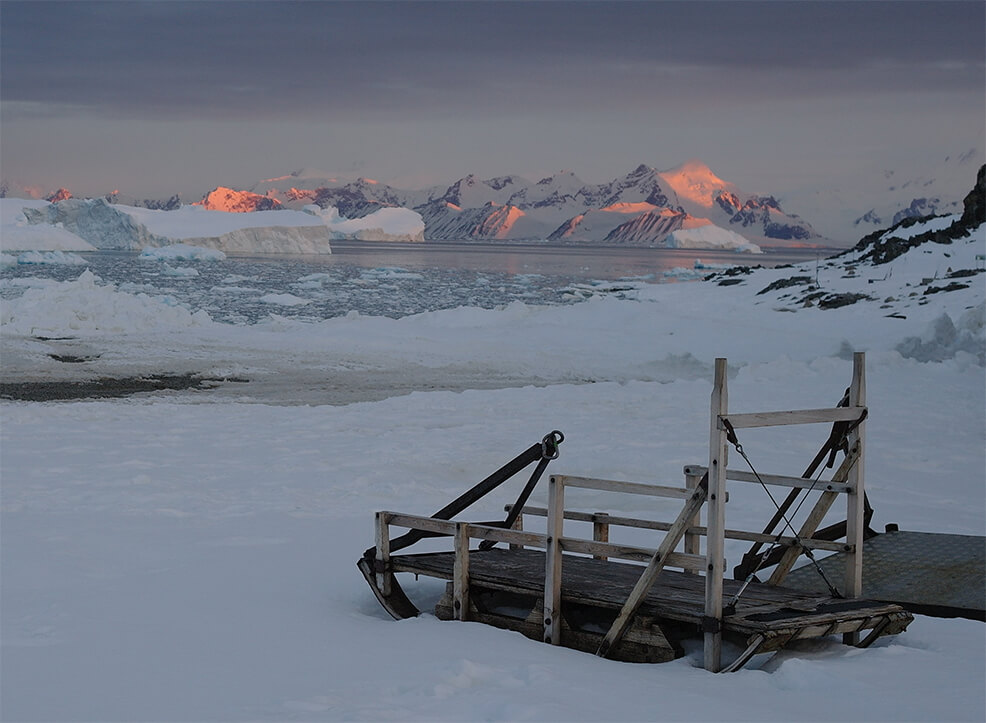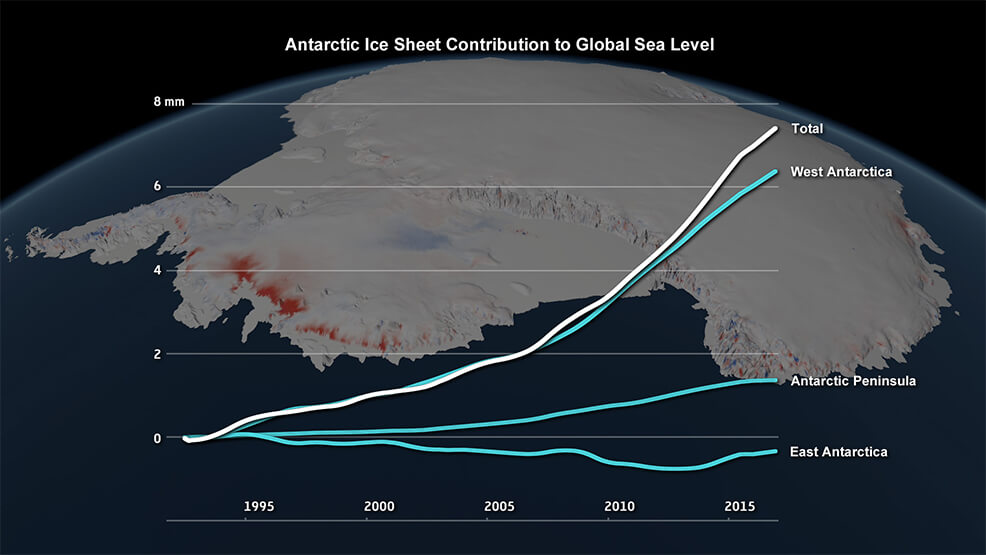
14th June 2018 Dramatic increase in Antarctic ice loss Since 2012, the rate of ice loss from Antarctica has nearly tripled, according to a study funded by NASA and the European Space Agency (ESA).
Results from the Ice Sheet Mass Balance Inter-comparison Exercise (IMBIE) were published yesterday in Nature. Ice losses from Antarctica have increased the global sea level by 7.6 mm (0.3 inches) since 1992, according to the report – equivalent to a 13 metre layer of ice covering the whole of Great Britain. Two fifths of that rise (3 mm) has occurred in the last five years alone. “This is the most robust study of the ice mass balance of Antarctica to date,” said assessment team co-lead Erik Ivins at NASA’s Jet Propulsion Laboratory (JPL). “It covers a longer period than our 2012 IMBIE study, has a larger pool of participants, and incorporates refinements in our observing capability and an improved ability to assess uncertainties.” This latest IMBIE combined 24 satellite surveys and involved 80 scientists from 42 international organisations. The researchers attribute the sharp uptick in ice loss and sea level contribution during the most recent years to a combination of increased melting in West Antarctica and the Antarctic Peninsula, alongside a reduced growth of the East Antarctic ice sheet. “When we place that against the [Intergovernmental Panel on Climate Change’s] sea level projections, prior to this Antarctica was tracking the low end of sea-level-rise projections,” says study co-author Andrew Shepherd, Earth scientist at the University of Leeds, UK. “Now it’s tracking the upper end.” Before 2012, ice was being lost at a steady rate of about 83.8 billion tons per year, adding 0.2 millimetres a year to sea level rise. Since then, the amount of ice lost per year has tripled to 241.4 billion tons, contributing 0.6 millimetres of sea level rise, or about one fifth of the global total. West Antarctica has seen the greatest change, with ice loss rising from 58.4 billion tons per year in the early 1990s, to 175.3 billion tons a year since 2012. Most of this loss is coming from the huge Pine Island and Thwaites Glaciers, now retreating rapidly due to ocean-induced melting.
At the northern tip of the continent, ice-shelf collapse from the Antarctic Peninsula has driven an increase of 27.6 billion tons per year since the early 2000s. Meanwhile, the team found the East Antarctic ice sheet has remained relatively balanced since 1992 and has actually gained an average of 5.5 billion tons of ice each year. These modest gains are hugely outweighed by losses elsewhere, however, as shown in the graph above. In total, the frozen continent is estimated to have lost about 2,720 billion tons of ice from 1992 to 2017. “We have long suspected that changes in Earth’s climate will affect the polar ice sheets. Thanks to the satellites our space agencies have launched, we can now track their ice losses and global sea level contribution with confidence,” added Professor Shepherd. “This has to be a concern for the governments we trust to protect our coastal cities and communities.” “Measurements collected by radar satellites and Landsat over the years have documented glacier changes around Antarctica at an amazing level of precision,” says Eric Rignot, senior research scientist at NASA's Jet Propulsion Laboratory. “We now have a very detailed and thorough understanding of the rapid changes in ice flow taking place in Antarctica and how they raise sea level worldwide.” “I think it’s fair to say that the more work that gets done, the picture we get of Antarctica is that it’s more dynamic and more capable of rapid change than we used to think,” says Steve Rintoul, an oceanographer at CSIRO in Hobart, Australia. Rintoul was not involved in this study, but co-authored a review on the future of Antarctica and the Southern Ocean in the same issue of Nature.
Comments »
If you enjoyed this article, please consider sharing it:
|








